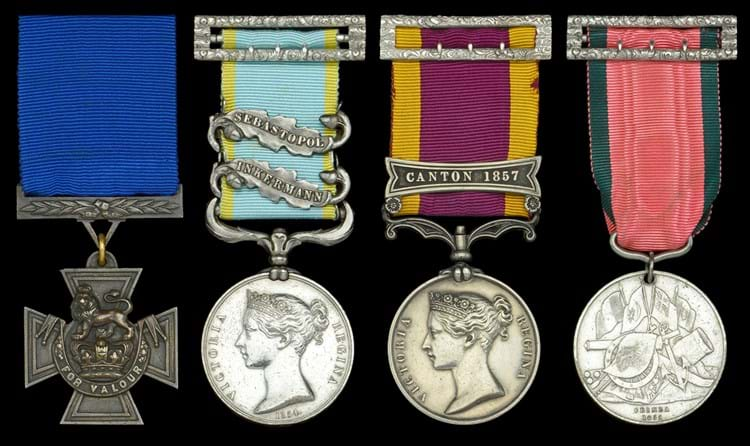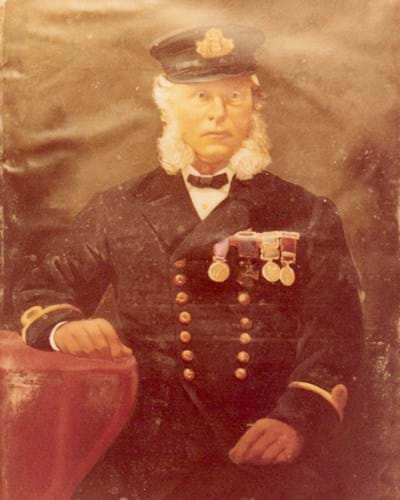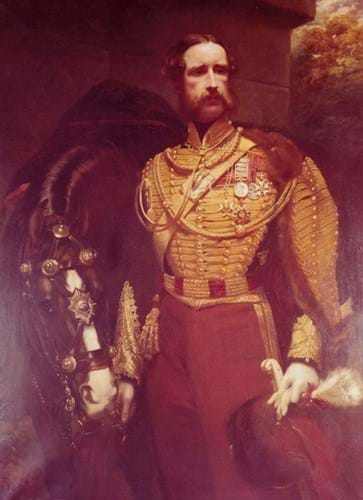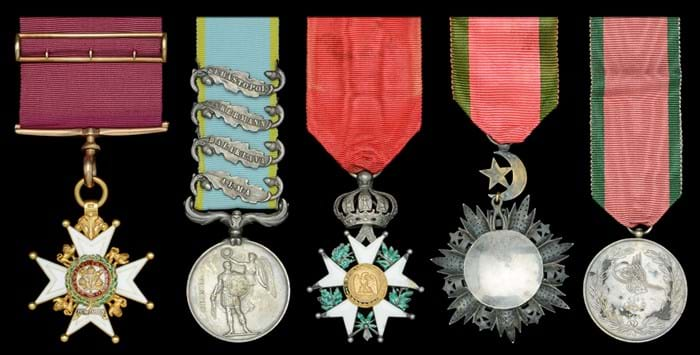
It was given to Australian resident Seaman James Gorman of HMS Albion, for his gallantry while defending the right Lancaster Battery at the Battle of Inkerman in the Crimean War on November 5, 1854.
The estimate at the October 15 auction will be £120,000-160,000.
Inkerman was one of the bloodiest and most desperate battles in British military history, fought in darkness and through deep mist when the Russians launched a sudden and massive attack on the lightly defended British lines.
Seaman Gorman declined the order to withdraw and leave the wounded, proceeded to mount the defence works and, using the weapons of the disabled who he was protecting, helped repel the Russian advance "not trusting any Ivan to get in bayonet range of the wounded".
This was one of three VCs awarded for this battery action – the other two are both held in the Lord Ashcroft Collection at the Imperial War Museum in London. Lord Ashcroft is a regular buyer of VCs via auction and private deals.

The Crimean War Victoria Cross and other honours awarded to Seaman Gorman are estimated at £120,000-160,000 in the Dix Noonan Webb auction on October 15.
Bravery recognised
Gorman’s award was listed in the notable February 24, 1857, issue of the London Gazette containing the first-ever awards of the VC. It was instituted in 1856 by Queen Victoria at the request of her consort, Prince Albert, and awards were backdated to the Crimean War (1854-56).
The first recipient was Mate Charles Davis Lucas of HMS Hecla for his bravery on June 21, 1854, during an attack on attacking the gun batteries of the Russian fortress at Bomarsund in the Aland Islands. Eleven VCs were awarded for the Crimean War.
Served on HMS Victory
Gorman’s well-documented later life confirms him to have been the first Australian resident to hold the honour.
He was born in London in 1834. He was assigned at the age of 14 to the training ship HMS Victory, Admiral Nelson’s former flagship, as a Boy Second Class, having been one of the first 200 boys to be accepted as apprentices into the Royal Navy.
Later on in his naval career, he saw service on the newly formed Australia Station, docking at Sydney on December 31, 1858 and January 1860 and also at Melbourne in March 1859.
Returning to England, he was paid off at Sheerness in 1860, thus ending his 13 years of service in the Royal Navy, but chose to return to the antipodes, boarding the 755 ton free trader Fairlie at Plymouth, bound for Sydney, Australia, in 1863. He remained in Australia for the rest of his life and was buried with military honours in the Church of England section of Balmain Cemetery (now Pioneers memorial Park, Leichhardt) in October 1882.
John Burridge, DNW Australasia representative said: “During his lifetime Gorman was something of a celebrity in Australia, becoming the first-ever Australian resident to hold a Victoria Cross and his contribution to this country following his move here is well documented.
"It is notable that there were no Australian-born recipients of the Victoria Cross prior to the Boer War of 1900, making Gorman’s VC even more significant in terms of our national heritage.”
Medal collector
Seaman Gorman’s VC is part of the Collection of the late Warwick George Cary (1949-2020). Cary was born at Engadine in the Sutherland Shire south of Sydney, New South Wales.
Joining the New South Wales State Emergency Service in 1982, he was appointed to be the Service’s inaugural State Protocol Officer in 2001. During his career, he was presented with numerous awards and also provided significant leadership in many major operations throughout the state, including the 2000 Sydney Olympics.
The second part of Cary’s collection will be offered in DNW’s medal sale in November.
Light Brigade charger

The Crimean War medals of Charge of the Light Brigade participant Major-General John Douglas are estimated at £15,000-20,000 in the Dix Noonan Webb auction on October 15.
Also featuring in the DNW sale will be a collection of medals from the Charge of The Light Brigade. The most important being a group of five awarded to Major-General John Douglas, who commanded the 11th Hussars during the Crimean War, and led them in the charge at Balaklava, which is estimated at £15,000-20,000.

The Crimean War medals of Charge of the Light Brigade participant Major-General John Douglas are estimated at £15,000-20,000 in the Dix Noonan Webb auction on October 15.
Douglas, who was born at Gartcraig, Lanarkshire, Scotland on April 25, 1811, joined the 61st Foot as an Ensign in 1829, immediately transferring to the 79th Foot. Advancing to captain in 1839 he was invited, six months later, into the 11th Hussars.
The following September, Douglas achieved a certain notoriety when acting as second to his commanding officer, John Thomas Brudenell, the 7th Earl of Cardigan, in his notorious duel with Captain Tuckett on Wimbledon Common. Cardigan later commanded the Light Brigade and led the Charge of the Light Brigade.





